The English invasion reaches French clothing! OMD or OMG?
As my title suggests, this post is going to talk about the so called “invasion” of English in France – or at least in Epône where I am conducting my study.
Since October, I have been keeping an ethnographic diary to note down: where, who, when and possible reasons why is being used in different areas around the school, house and town here. Having looked back over my field notes, I have found that a large majority of my notes at school talk about the clothes that my 6e classes wear, which appear to be flooded with anglophone sentences, pictures and brands.
Although I have kept a detailed diary of these findings, I wanted to try and use another skill – photography – as a way of demonstrating just how much English is being worn by my students and so I decided to try and come up with some way of making this happen.
Photography at school is always difficult as you have to be careful that each student is anonymous, and so I wanted to find some way of managing this. Therefore, I went to my responsable and explained to her that I had seen lots of students wearing clothes with English on them, and I asked her if she would ask the class to bring into college 1 item of clothing each which they owned with some English writing on it. They were asked to bring the clothing in and not wear it. However, as some students forgot not to actually wear the items of clothing, I decided that I would still take the photos, and try to protect their identity in another way. I did this by talking to the ICT teacher about how I could edit the photos so the students’ faces could not be seen. He explained to me that I could send him the photos and he would blur out the faces for me (as seen in the photos below) in order to protect their identity – so hopefully this method is acceptable. (NB: The photos with students wearing their shirts have been removed for the public website. – Editor)
Although I realise that my asking the students to specifically bring in clothes with English on them could be seen as biased (as not all of them would wear clothing with English on on one day – it is usually around 10 students per class) – I did notice that most of the clothing that they bough in/ wore were clothes that I had noted in my field notes book previously; I just needed to find a way to get photos in a way that would not effect the students’ identity and would not disrupt the lesson – hence why the photos were taken at the end of a class with my responsable present and her spoken permission (she even bought a top in with English writing to contribute to my project as seen below).
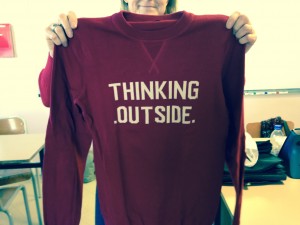
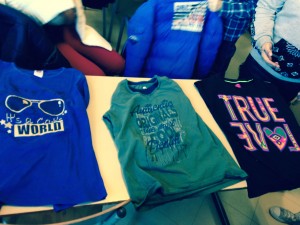
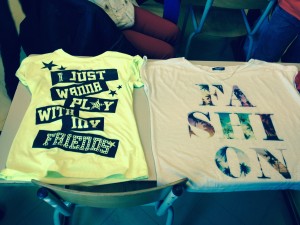
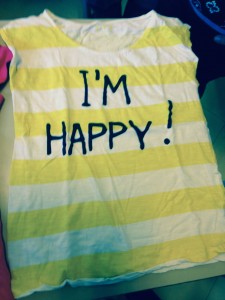
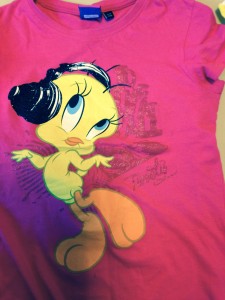
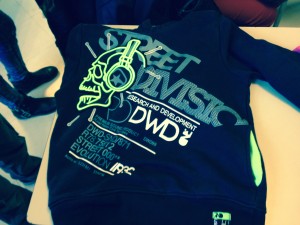
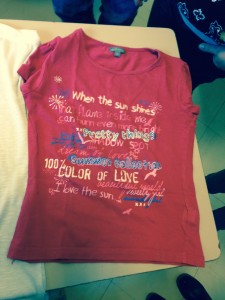
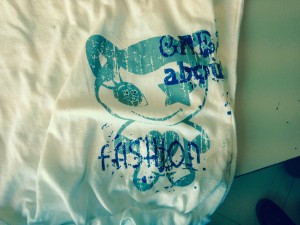
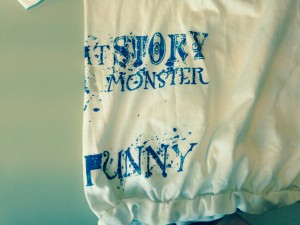
As evident from the above photos, it would appear that a lot of clothing with English slogans/ sentences/ brands etc is worn by my 6e class, and the photos prove that each student in this class owns at least 1 item of clothing with English on it (including the teacher).
It was very interesting to find that when asked, most of the children had absolutely no idea what was written on their t-shirt/ hoodie/ shirt. I found this out by asking each student what their garment said before handing it back to them, and most of them could not answer me. Of course I gave them the translation, but it was interesting to note that they go around wearing these garments with no idea what they said. A couple of girls in the class made a joke about paying more attention in class so that they’d be able to learn more English so they knew what they were wearing – so it would be interesting to see if in fact this is a common reason for learning English (to understand what clothing says) or if the students in my school aren’t generally worried enough about what their clothes say to take the time to learn English to help them understand.
I have also noted that my 6e classes wear a lot more clothing with English words on than for example my 3e classes. I asked my 3e classes about this and they told me that it was “cool” to wear English, but that a majority of clothing for their age doesn’t have as many English words/ sentences as clothing for younger people. Therefore it could be interesting for future ethnographers to see if the increased use of English on clothing for younger people has more of an impact on their learning of English than older teenagers who possible haven’t been exposed to as much English in terms of clothing.
HOWEVER….Although it would be very easy to presume that the “invasion” of English on clothes sold in France is something new – I have in fact found evidence to suggest that this invasion goes back to the 80s and 90s – and possible even further back. Nonetheless, for the purpose of this post I shall only give a few examples going back to the 80s.
Having googled “les vêtements pour les infants 90s” and consequently I found a website entitled “Les marques oubliées dans les années 1980 – 1990“. I found it interesting that many clothes on this website also featured English sentences and slogans even though some of them date back at least 30 years. Although some of the brands are American and not of French origin, the website does say “Ces marques vous disent sans doute quelques chose si vous avez grandi dans les années 80 et 90 : Waïkiki, Poivre Blanc, Schott, Dia, Chevignon, etc.” which suggests that similarly to many of the french youth today, the 80s/90s children also wore a mixture of both French and foreign brands – both of which have English captions.
For example:
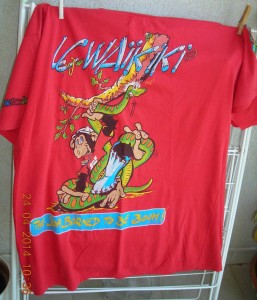
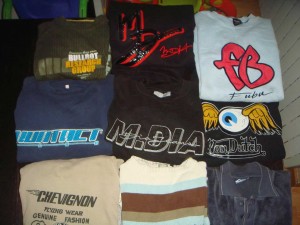
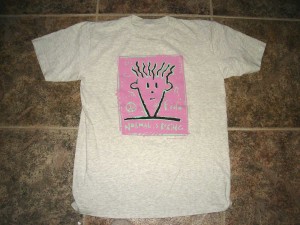
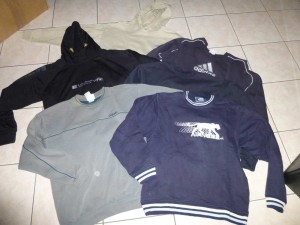
To conclude, I think to say that there has been a recent “invasion” of English on clothing worn by the French would be unfair, as there is evidence to suggest that this has been happening for a while. With this in mind, I would like to talk to different aged French people both in school and those who live at home about English on clothing in order to out about their personal experiences of it, and to see if they think it has had any impact on their learning and/or use of English.
Food for thought.
As it appears to be somewhat cool and fashionable to wear clothes with English on them in France, I thought I’d take a look into English clothing to see if we use French to seem “chic/ cool”, and I found this:

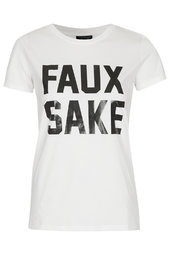
Is there a French invasion reaching English clothing?


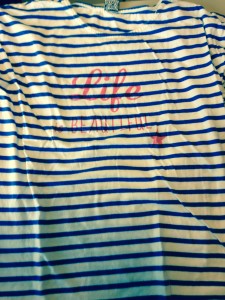
Leave a Reply